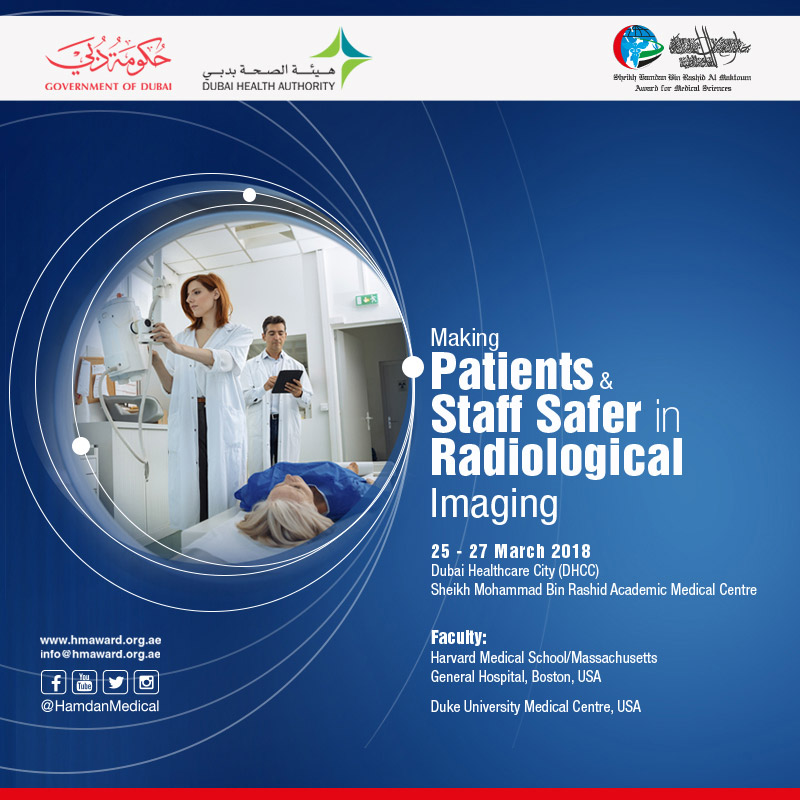Within the framework of its Campaign on Rare Disease: Hamdan Medical Award monitors 340 Rare Diseases in Arabs
29 February 2012
Hamdan Medical Award has declared the presence of 340 Rare Diseases in Arabs, hinting at an actual figure that could be 2-4 times higher, according to the preliminary data compiled in the center’s Catalogue for Transmission Genetics in Arabs (CTGA) Database.
The report confirmed that although there are many definitions of rare disease, there are between 6,000 and 8,000 rare diseases affecting 4-6% of populations worldwide; a total figure of nearly 350 million individuals.
"Rare diseases are often chronic, progressive, degenerative, and often life-threatening. Approximately, 70% of rare diseases appear in childhood and about 30% of children with rare diseases die before the age of 5. In most cases (80%), rare diseases have genetic origins. Others result from infections (bacterial or viral), allergies, and environmental causes", the report said.
"Rare diseases are characterized by a broad diversity of disorders and symptoms that vary not only from disease to disease, but also from patient to patient suffering from the same disease", the report added. The report reviewed two categories of Rare Diseases among Arabs; the first category is for diseases occur in only a handful of patients, exclusively of Arab origin. The second category is for Rare Diseases occur in both Arabs and non-Arabs.
The report dealt with some very rare diseases in Arabs, such as Teebi Al Saleh Hassoon syndrome. This disease has been described in an Arab girl born to consanguineous parents in Kuwait, characterized by a very small eyes and a large body size at birth.
The second disease is Al-Gazali syndrome, characterized with multiple skeletal abnormalities along with anterior segment anomalies of the eye and early lethality. Al-Gazali syndrome was described in two sibs from a highly consanguineous Palestinian family and two more sibs from a consanguineous Sudanese family, all living in the United Arab Emirates.
As for Barakat syndrome, characterized by the presence of hypoparathyroidism, sensorineural deafness, and renal dysplasia, it was described in a number of families from the United Arab Emirates.
According to Rare Diseases occur in both Arabs and non-Arabs, the report reviewed many diseases such as Propionic academia, Cutaneous malignant melanoma (CMM), Canavan disease, Primary ciliary dyskinesia and Poland syndrome.
As for Cri-du-chat syndrome, also known as cat cry syndrome, it is a rare cytogenetic disorder that results from a missing piece of chromosome 5. The name of the syndrome comes from the characteristic cat-like cry of infants with this condition (cri du chat being a French term for ‘call of the cat’), which itself originates from laryngeal problems. Other characteristics of the disorder include mental retardation, developmental delay, low birth weight and delayed growth, microcephaly, infantile hypotonia, partial digital webbing, and a single transverse palmar crease. Worldwide, one in approximately 20,000 to 50,000 neonates is estimated to be born with this condition. In the Bedouin population in Jahra district in Kuwait, a clustering of cri-du-chat syndrome has been detected, where the disease occurs at an incidence rate as high as 1 in 17,491 births.
"While medicine is moving towards the implementation of personalized treatment, in the case of rare diseases this notion becomes unavoidable. To reach this goal, however, many cumbersome studies have to be conducted to shed more light on all aspects of each and every rare disease. This task is nevertheless subject to naturally-existing constraints mainly due to the low prevalence of rare diseases, their clinical complexities, the difficulty to find experts in the field and to recruit patient cohorts, the associated expenses to develop effective treatment, and the limited market for potential discoveries", the report referred to.

